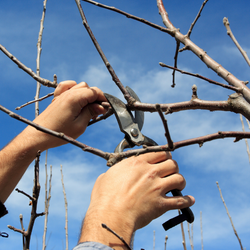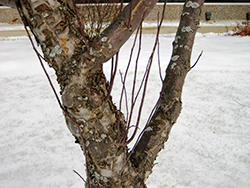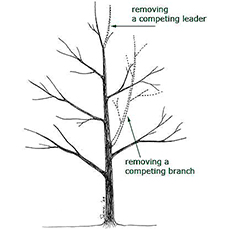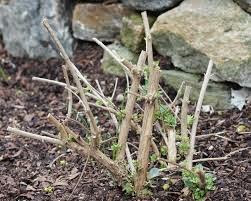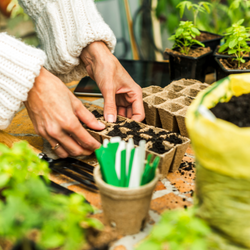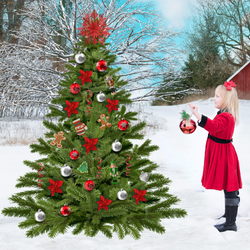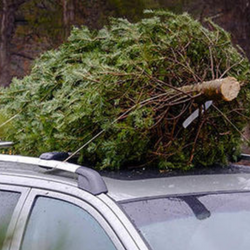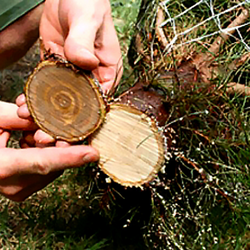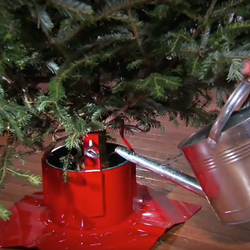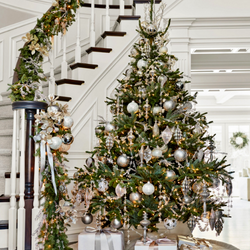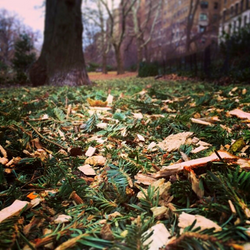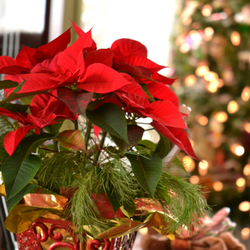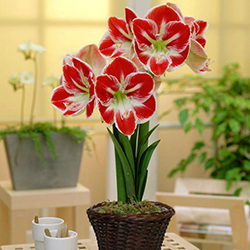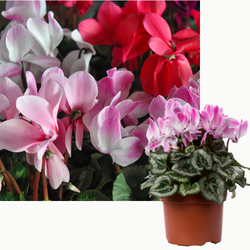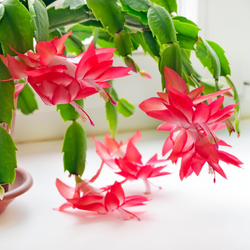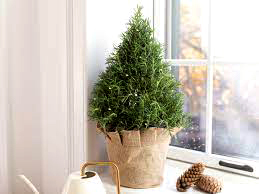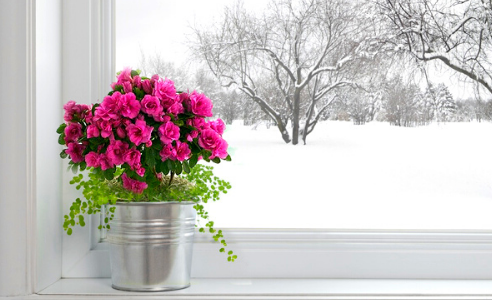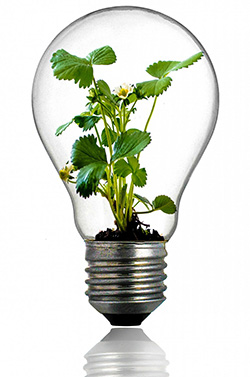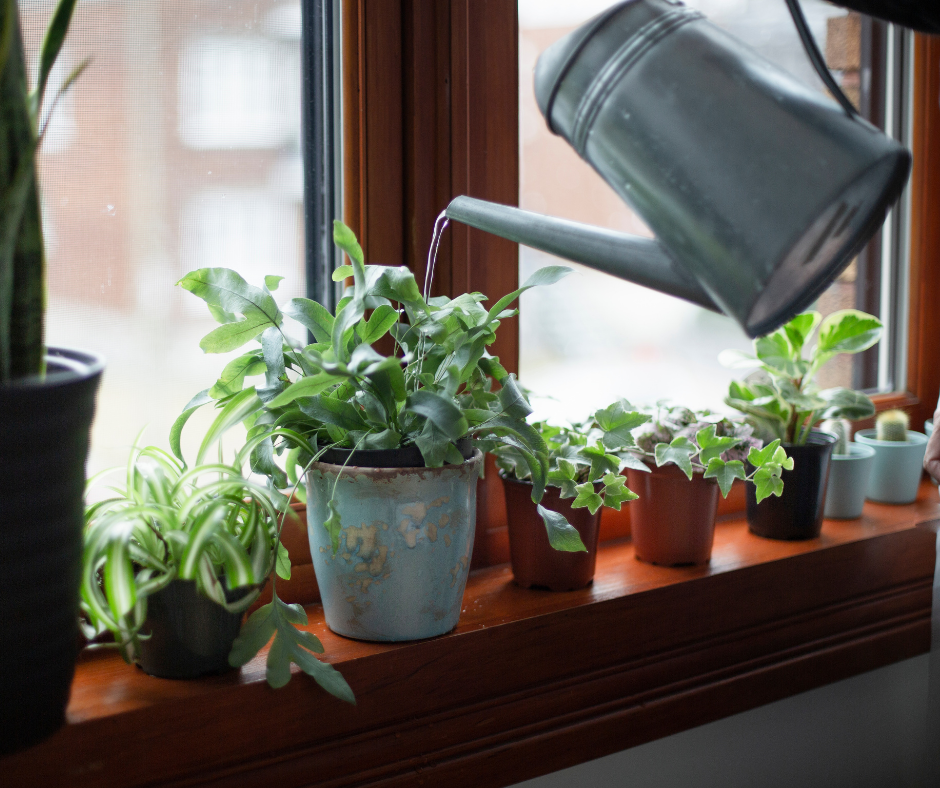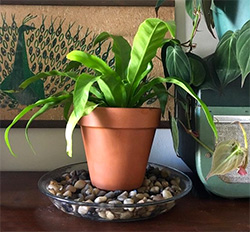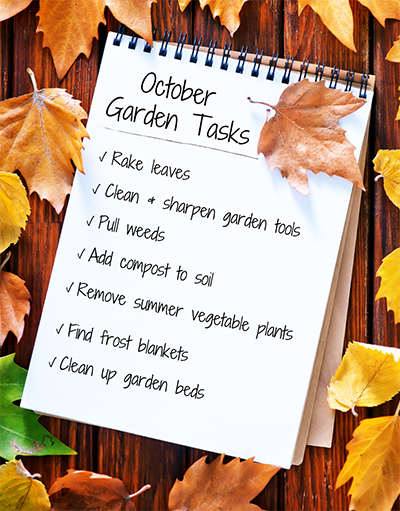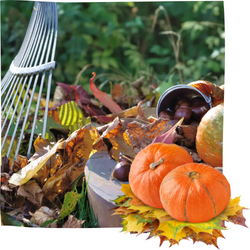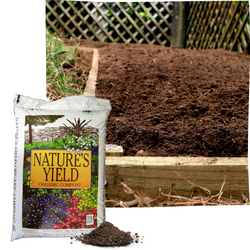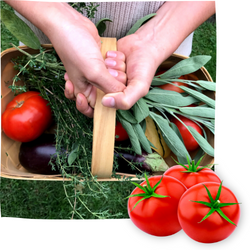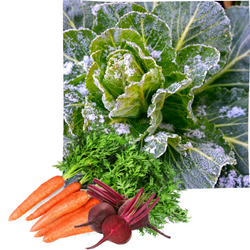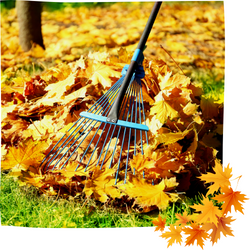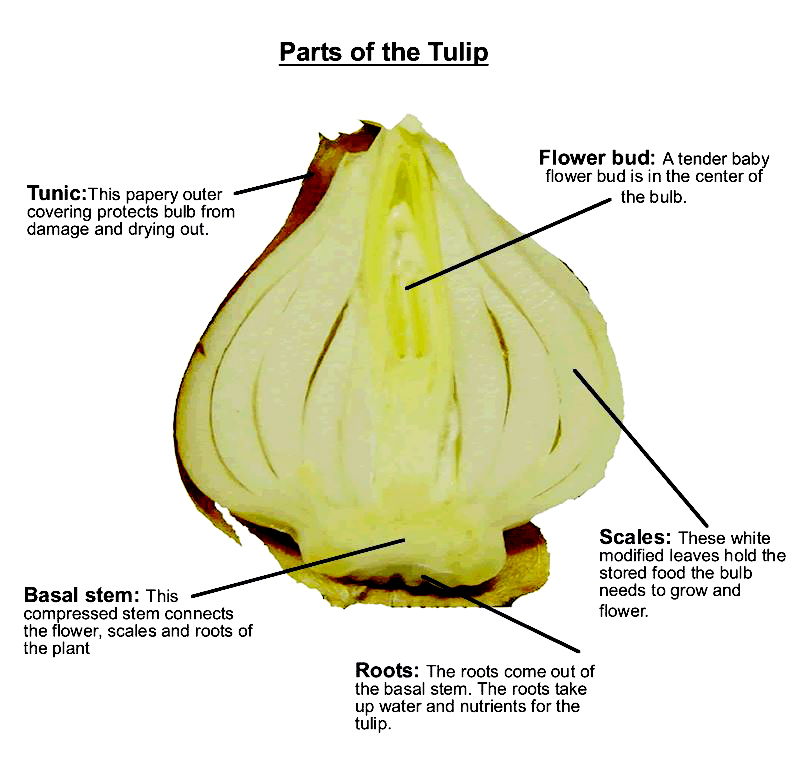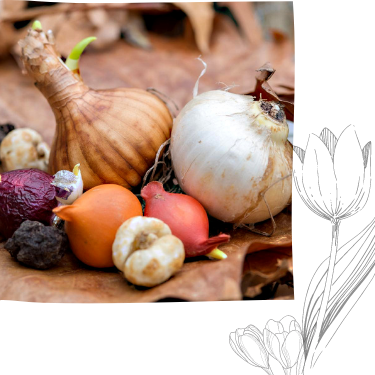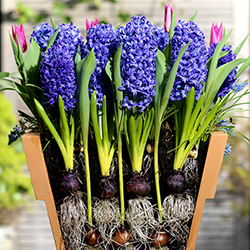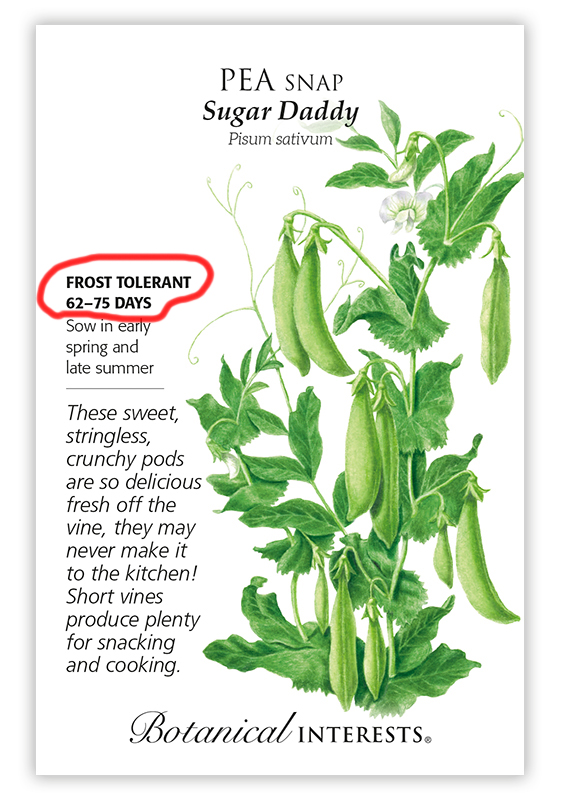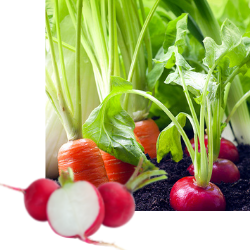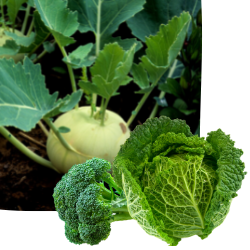
“Anyone who thinks that gardening begins in the spring and ends in the fall is missing the best part of the whole year — for gardening begins in January with the dream.”
~ Josephine Nuese
Flower Gardens
Don’t worry if you see evidence of leaves of your fall-planted bulbs popping up out of the ground. This is quite normal and there is no way to stop them. Keep the soil moist, which will cool it and keep the bulbs hydrated.
To prevent sparrows and finches from shredding crocus blossoms, place a piece of Bird Scare Tape tied to a stick every few feet among the flowers. The flashing will frighten away the birds.
Check your gladiolus, dahlia and canna bulbs you have stored to make sure the media in which they are stored is still moist.
Perennials & Roses
When planning your flower bed, whether it is planted in annuals or perennials, don’t overlook ornamental grasses for a beautiful contrasting texture.
Be sure that the winter mulch around your perennials, roses and bulb beds is still in place. Replace mulch that has been blown away by heavy winds.
Cut the seed heads from your ornamental grasses and use them to make very attractive dried flower arrangements in your house.
Cut back last year’s growth from ornamental grasses now before this year’s new growth begins.
Lawns
When snow and ice are gone from shady areas of lawn (especially on the north side of structures) rake the grass to prevent snow mold.
Water your lawn with a sprinkler during long stretches of mild dry weather. Be sure to disconnect the hose and put it away before the weather drops below freezing again.
If you see “trails” in your lawn, you may have voles, a common rodent in Colorado. We carry products to eliminate this pest. Voles have been known to chew on bark of trees and shrubs, especially junipers. You may notice dead branches on junipers later in the spring. Look deep inside the shrub and you will see where the bark is missing.
Vegetable Gardens
January is a good month for gardening, at least on paper, as you start planning for this year’s garden. Although you’ll want to include many of your family’s favorites, why not try something you’ve never grown before?
February is the best time to prune grape vines. By waiting until just before growth begins in spring, you can recognize and remove any dead or damaged wood.
Your spring crop of asparagus will benefit greatly from the addition of manure to the bed.
January and February are the best months to purchase your flower and vegetable seed. The best availability and selection is early.
Take inventory of your seed starting supplies, such as pots, soil, and flats. Sterilize any that you have used before or purchase new supplies. Be ready so that you will have everything you need for a successful project.
When starting seeds indoors, use a propagation mat. It keeps the soil in the trays at a constant warm temperature. You will get quicker germination, more seedlings and more uniformity.
Trees & Shrubs
Knock down heavy snows from your shrubs and tree branches by gently pushing up with a broom. Start with the lower branches and work your way up the tree or shrub.
It is very important to keep your lawns, trees, shrubs, perennial and bulb beds watered once a month throughout the winter as weather permits. You will reduce the chance of root damage on perennials, trees and shrubs and reduce insect population and disease problems in your lawn next year.
Get an early taste of spring. Prune branches of forsythia, quince, spirea, dogwood, viburnum, pussy willow and crabapple and plum trees. Bring them indoors to bloom. Cut the branches at an angle and place them in a vase of water. Change the water twice a week and in about 3 weeks the stems will bloom. Don’t prune the rest of the shrub until after they have flowered in spring.
Prune summer and fall blooming shrubs in February. This is the time to shape up your trees as well. Remove dead, dying, or unsightly parts of the tree. Your pruning arsenal should include bypass pruners, a compound action lopper, a tree saw and a pole pruner at minimum. Bring in your tools for sharpening if they have become dull.
If you have large trees that need pruning, call us for the name of a tree service. The sooner you call, the more likely you will get your trees pruned at the best time of year.
February into early March is the best time to prune fruit trees. Prune out any dead or diseased branches, any branch that is crossing and rubbing another and any “water sprouts” (those weak “branches” that shoot straight up).
On a nice warm day, spray Bonide All-Seasons Dormant Oil on trees, shrubs, roses, vines or most anything else you had insect or disease problems on last year. It kills overwintering insect eggs and will help reduce the problem this year. Avoid spraying blue spruce or you will have a green spruce.
When shoveling snow from your sidewalks and driveways, pile the snow around trees, shrubs and perennial plants instead of out in the street as long you have not used chemicals or salt to melt the ice. These plants will benefit from the added moisture.
Indoor Plants
If a houseplant is not doing well, check these five growing factors: light, temperature, nutrients, moisture, and humidity. They must be favorable to provide good growth. Bring the plant in to our plant doctors if you need help with a diagnosis.
Keep holiday cacti blooming by keeping them in a cooler location with bright sun. You can move them outdoors in summer in a semi-shaded location. Then bring them in next fall for reblooming.
Cyclamen are great plants for brightening your home in winter. They prefer a cool, dry and bright place. The pink, red, white or maroon flowers will continue for weeks.
Try growing a citrus tree in your house. If is best to have a tree which has been grafted, as opposed to trying to grow them from seed. The fragrance of the blossoms is wonderful and after pollinating the flowers with a cotton swab or artist’s brush, you should eventually have fruit. Choose the sunniest window in your house for citrus.
Grow your own herbs inside. Either from seeds or plants, there is nothing like fresh herbs for all kinds of winter dishes, like soup, stews, and many other comfort dishes for those cold winter days.
Keep your poinsettia blooming after the holidays by providing proper care. Poinsettias need good drainage, so if the pot is still wrapped in foil, remove the foil or make a hole in the bottom to allow the water to drain out. Keep the soil moist, but don’t overwater. Place your plant in a cool, (60 to 65 degrees F.) location that gets plenty of light. Keep out of warm or cool drafts, and fertilize once a month.
Children are fascinated by “garbage gardening”. Carrot tops can be grown in a dish with a small amount of water. This results in a delicate fern. Sweet potatoes, pineapple tops, avocado seeds, orange or grapefruit, and peach seeds can also be started.
If you are overwintering your geraniums inside, be sure to cut them back 1/3 of their height before February 1.
If you have a problem with those very annoying fungus gnats coming from the soil under your houseplants, let your plants dry out down to at least 1 inch before watering them. Gnats thrive in moist soil and multiply. Quick Kill Mosquito Bits with Bti, a biological pesticide will control them in the larval stage. Applying a pyrethrum or permethrin to the soil will reduce their numbers. Whitefly sticky traps will also catch those that come out of the soil.
African violets bloom better when surrounded by other African violets. The more the merrier.
Birds
Echter’s offers many seed mixes for all types of birds who are seed eaters. Individual types of seed are also popular and there is a great selection to choose from. Sunflower seed, safflower seed and nyjer seed are among the favorite choices. Insect-eating birds such as flickers and nuthatches have a taste for suet and peanut butter rather than seed, so be sure to consider their needs as well.
Put your leftover Christmas tree outside and decorate it with strings of popcorn and cranberries to feed the birds. Add pine cones which have been spread with peanut butter and rolled in bird seed. The birds will love you.
Ever wonder about how the birds protect themselves in the freezing cold weather? First of all, they need clean feathers, so an unfrozen water source is essential for birds to bathe. They need water in the winter as well as spring and summer. By placing a birdbath de-icer in your birdbath, the birds will stay happy all winter.
Another requirement is shelter. You will often find a lot of birds in dense shrubs, spruce and pine trees. Any protection you can offer would be appreciated very much by our feathered friends. If squirrels are a nuisance, use a squirrel-proof feeder.
Home & Patio
Urea is a safer ice melt around lawns, plants and pets, but it only melts ice down to about 15 degrees. If you need to use calcium chloride for cold-temperature ice melting, try to avoid pushing it onto desirable plants. Only use as much ice melt as is necessary and try to keep it in the center of the walk.
Dried herbs for cooking taste better when dried on paper towels or a wire screen. Hanging them upside down can deplete their essential oils.
We can sharpen your mower blade for a nominal fee. Bring in your lawn mower blade on or off the mower.
Miscellaneous
Gardening is a great way to exercise. You can burn as much as 300 to 400 calories per hour by digging, raking, or turning compost. Besides, gardening is fun and fruitful! Be sure to start with short spurts and ease into longer periods of gardening time.

